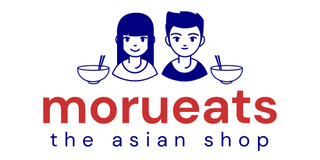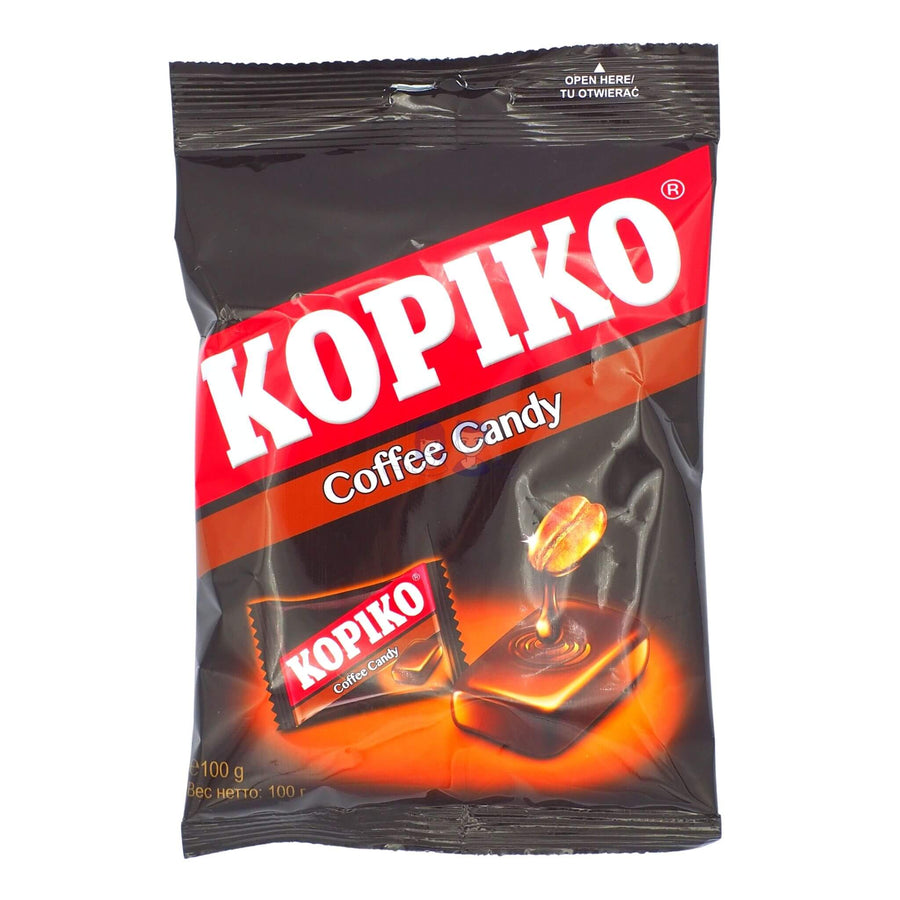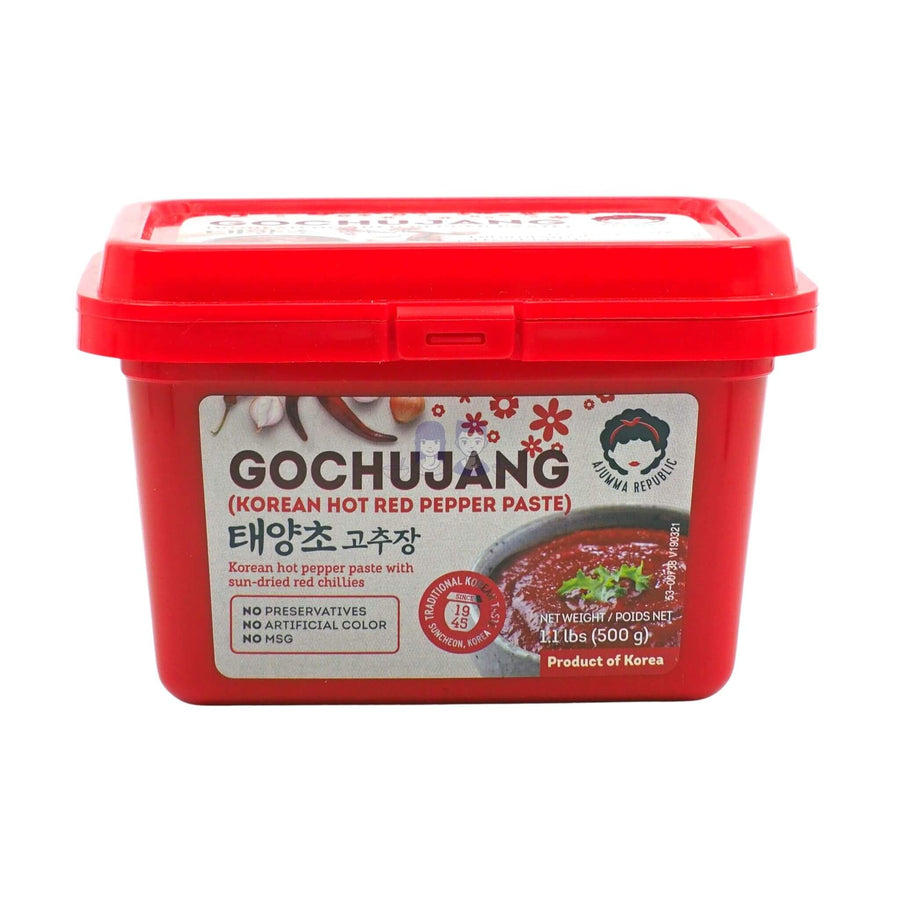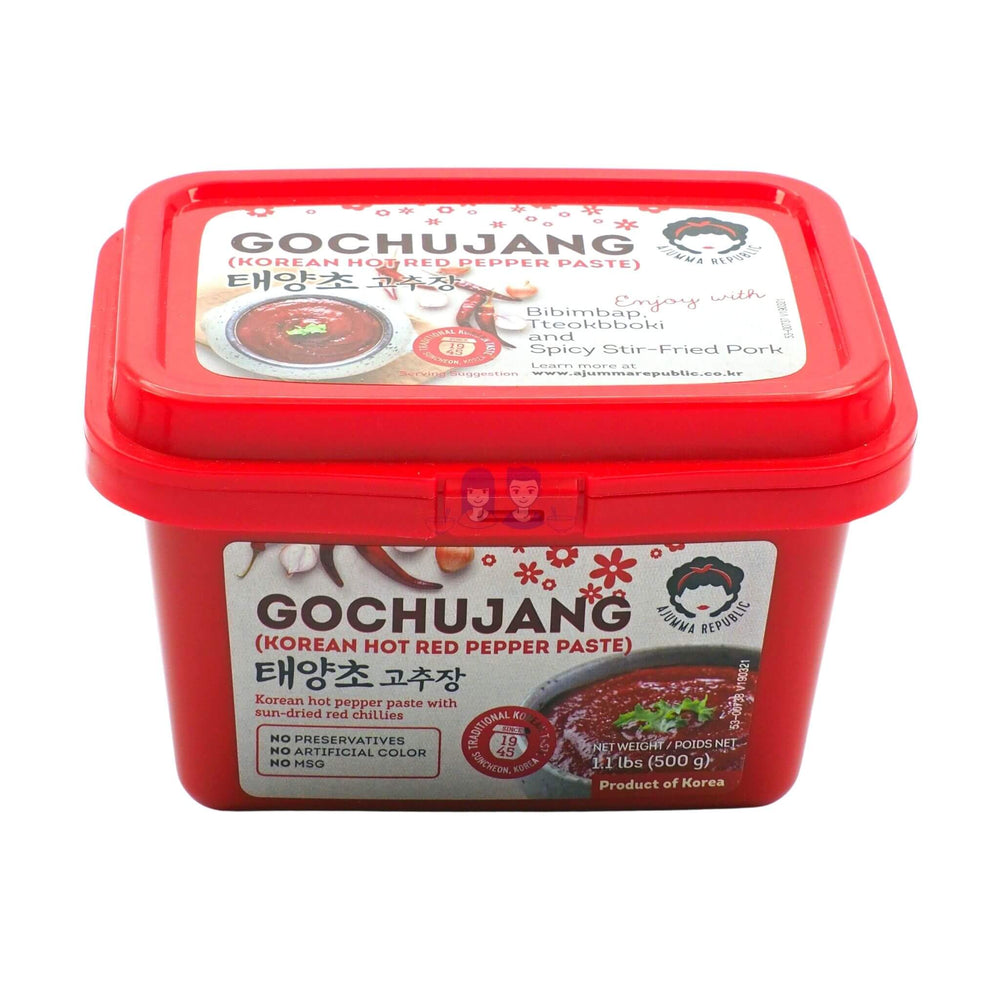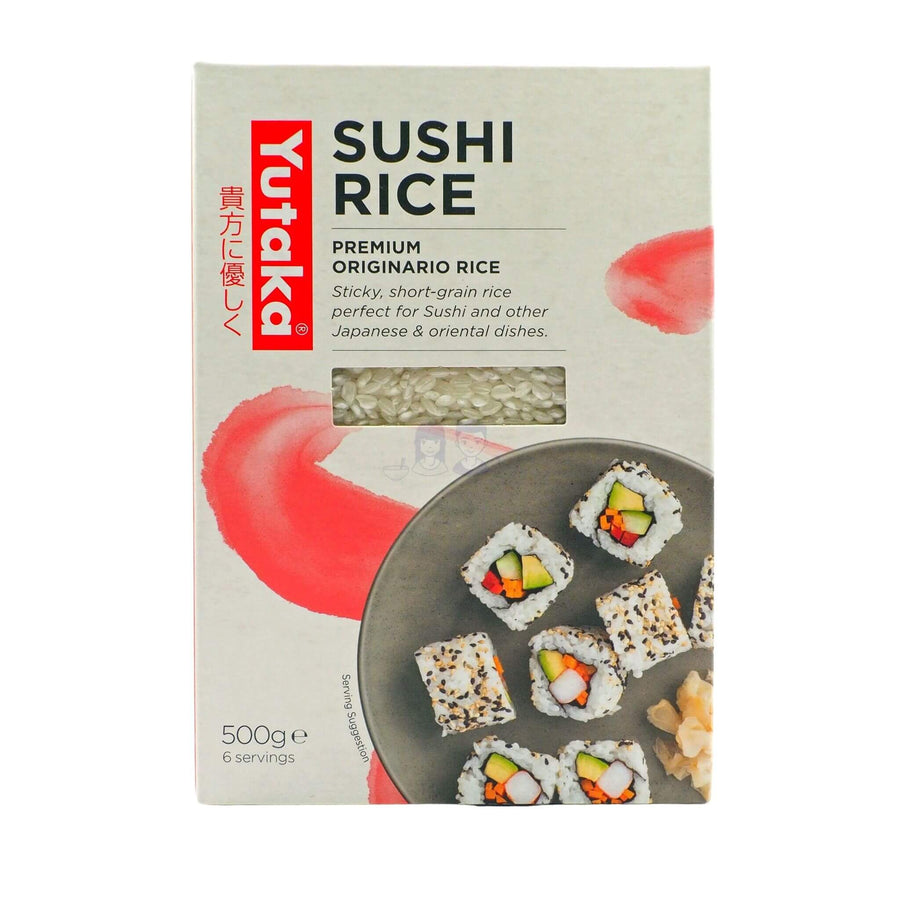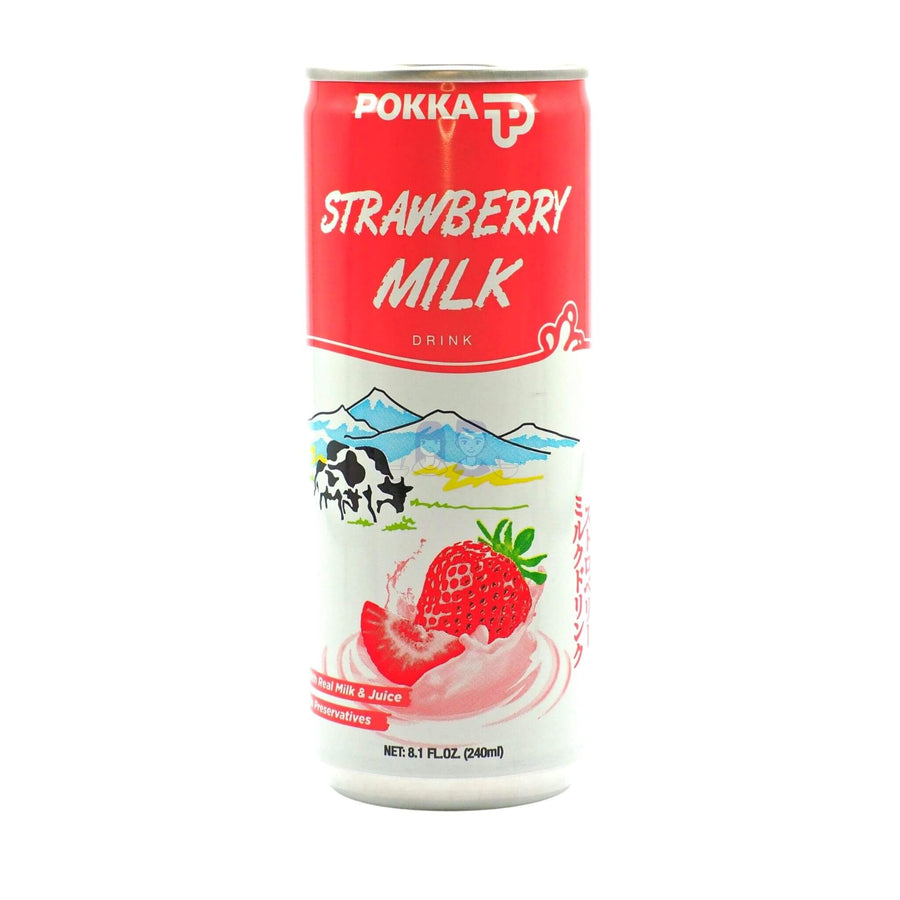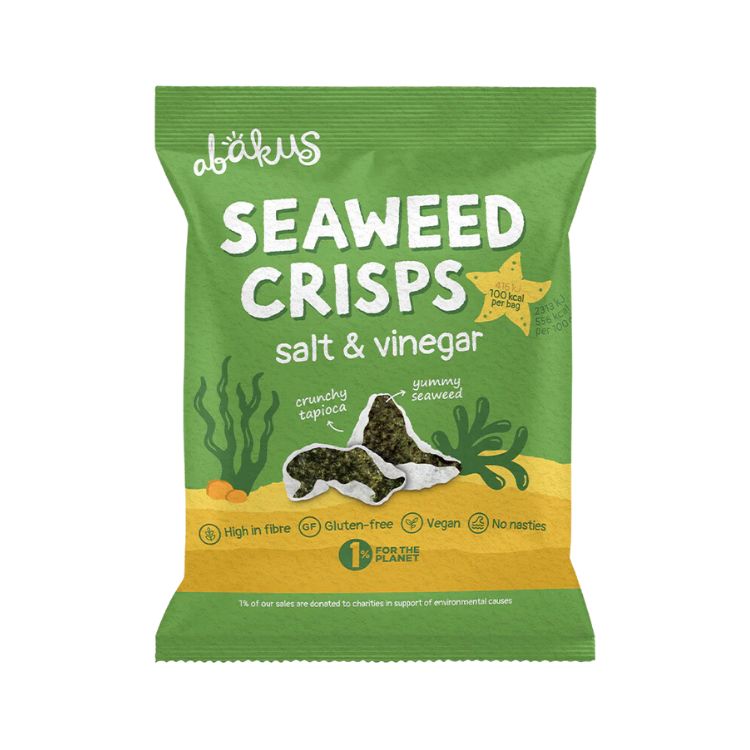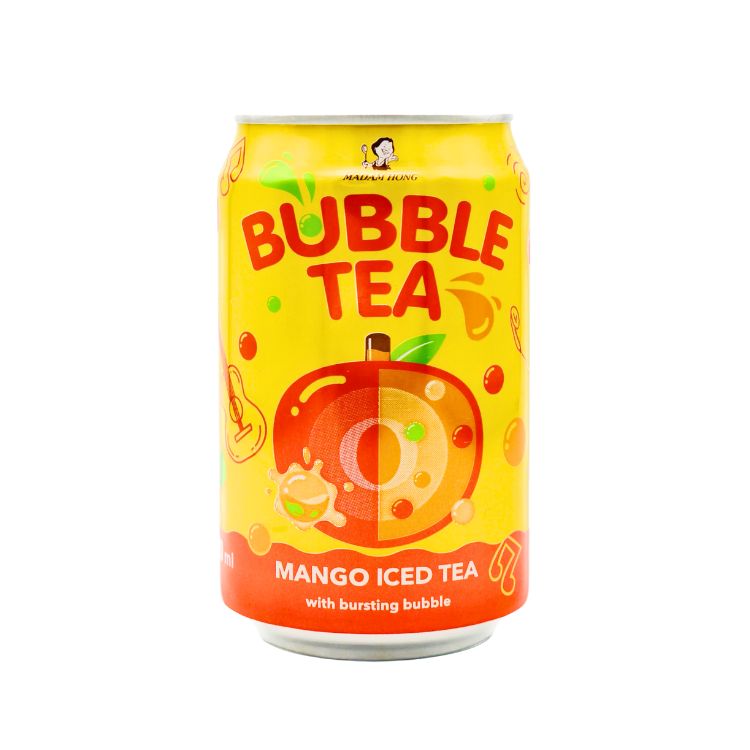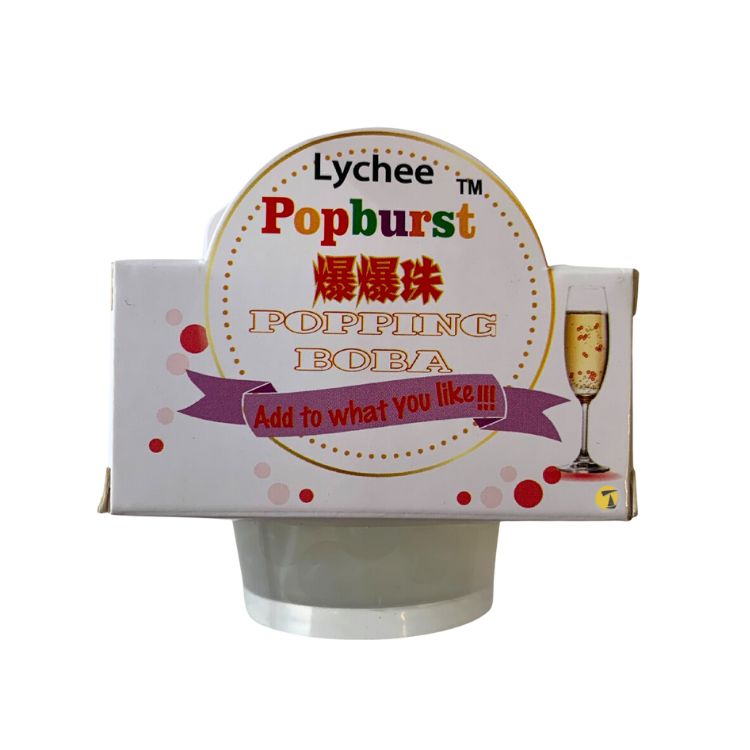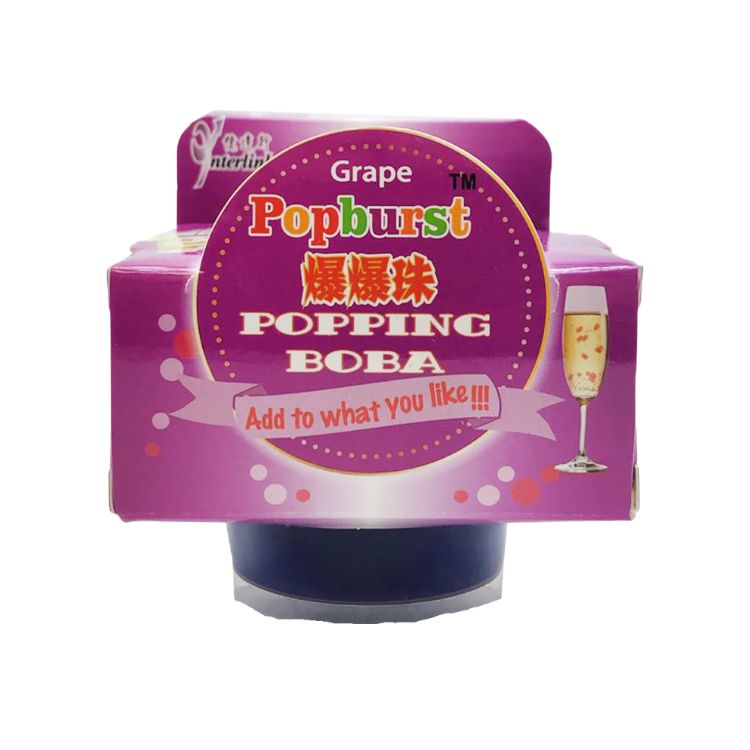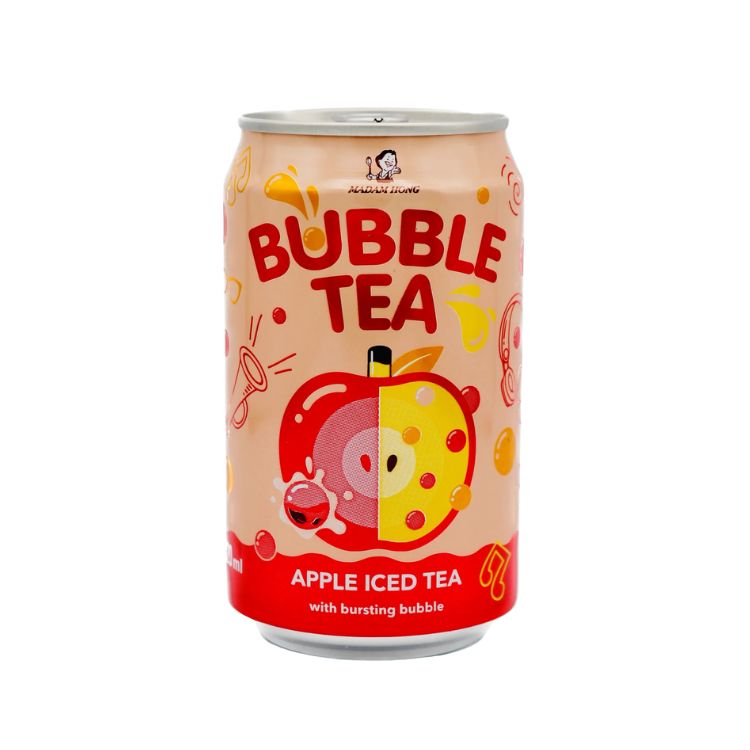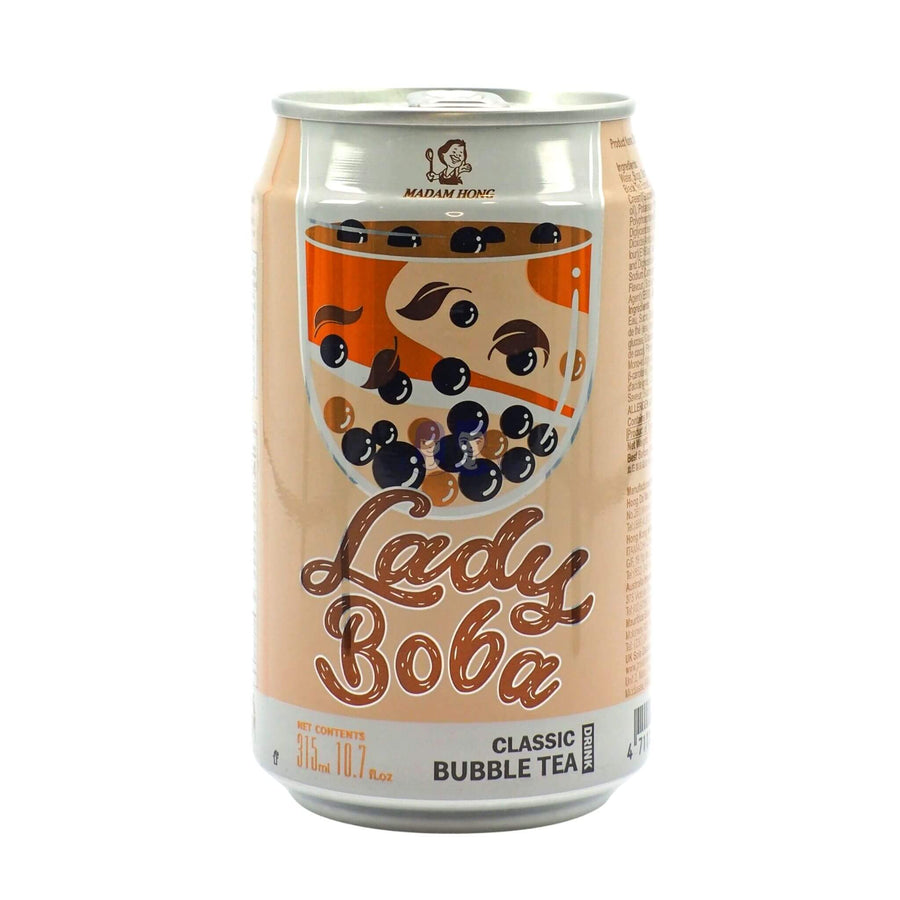What Is Bubble Tea? Explore the World of Delicious Bubble Tea Drinks
Bubble tea—also called boba tea or pearl milk tea—is a wildly popular Taiwanese drink. It is made from brewed tea, milk (or dairy-free alternatives), sweeteners and those famous chewy tapioca pearls.
From classic black-tea milk versions to fruit-forward infusions, its endless customisation potential has helped the drink explode in the UK.
But what exactly is bubble tea? How did it start? Why do people love it so much? And what varieties are available?
Here's everything you need to know about this tasty, iconic beverage, which also happens to be one of our favourite Asian drinks.
→ Shop now: Our handpicked range of Bubble tea products
What is bubble tea, and why is it so popular?
Bubble tea is a tea-based drink most commonly served cold, which originates from Taiwan. The most popular versions consist of a base of black, green or oolong tea (a type of Chinese tea) alongside milk, chewy tapioca balls and flavouring. The mixture is typically shaken with ice and served with a big fat straw.
Bubble tea is popular because it tastes and feels great! The tea itself is both sweet and refreshing, while the tapioca balls add an addictive, chewy texture. The nature of the drink also makes it possible to satisfy all different tastes - green tea, black tea, more sugar, less sugar, milk, no milk - you call the shots!
And guess what? You don't need to travel to Asia for some great-tasting bubble tea drinks either! You can get some right here at home… Bubble Tea cafes have been popping up all over the place recently - from London to Sheffield to Birmingham and even Glasgow!

What's the history of bubble tea?
Bubble tea is a Taiwanese invention that has become popular throughout South-East and East Asia, and most recently, the West.
Although there is some debate, it is generally accepted that the drink was invented in the 1980s by a Taiwanese man named Liu Han Chieh (sometimes spelt Lee Han Chieh). Liu Han had the idea for a drink that combined three popular Taiwanese desserts and refreshments from the time: milk tea, tapioca balls and shaved ice.
Bubble tea evolved over time and grew in popularity across Taiwan, becoming one of the country's most popular foods and drinks. More hawker and nightmarket stalls started taking the concept forward, innovating and coming up with ever tastier variants.
Due to its popularity, the drink spread through Asia quickly, reaching the USA in the 1990s and the UK in the 2000s.
Bubble Tea in the UK: From Taipei to Your Town
Since the mid-2000s, bubble tea bars have started appearing on many of Britain’s high streets—from London’s Chinatown to Manchester’s Northern Quarter—bringing a taste of Taiwanese street culture to the UK. The drink’s DIY nature resonates with British food enthusiasts who love personalising sweetness, flavour, ice level and toppings.
What is boba tea, and is it different from bubble tea?
Boba tea is just another term for bubble tea. It's also sometimes referred to as pearl milk tea, tapioca milk tea, as well as several variations on these names.
That said, "bubble" and "boba" both relate to the tapioca balls in some way. The term "boba" is based on a Chinese slang term used to describe the large, round shape of the tapioca pearls. The name "bubble" comes from the fact that the balls tend to move around in liquid much like bubbles do while they're floating in the air.
What types and flavours of bubble tea exist?
The variety of bubble tea options varies by type of tea, milk, toppings and flavours. There are an infinite number of variations possible, and this is one of the main reasons that people love it so much.
Some bubble tea stores will allow you to choose your preferences, while others may have a selection of their own recipes.
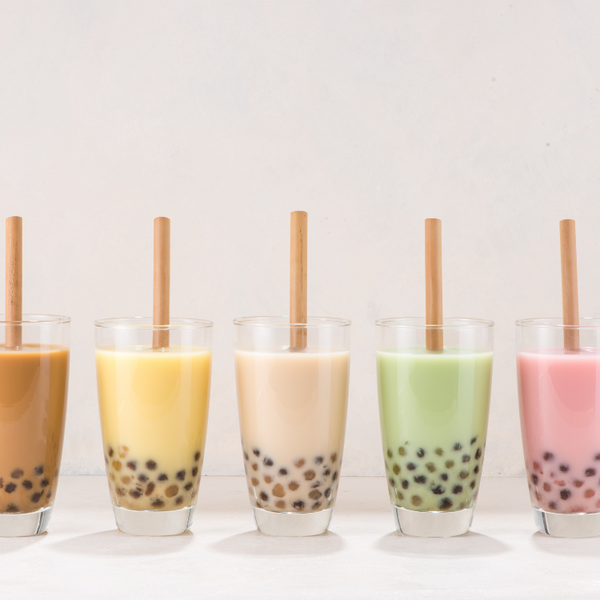
Types of tea
When ordering bubble tea, the first thing to consider is the tea base.
- Black tea - the most popular option, including our personal preference
- Green tea - includes matcha green tea and several other popular Japanese teas
- Oolong tea - another popular option
- Fruit tea - seasonal fruits or concentrates
- Smoothies / Milkshakes - both dairy and fruit-based blends
Types of milk
The second thing to consider is the type of milk.
- No milk - popular for those on diets or with certain fruit or smoothie bases
- Fresh milk - the original 1980s recipe and what we usually go for
- Non-dairy creamer - by far the most popular
- Condensed milk - for an extra sweet, creamy taste
- Soy milk - low-fat, plant-based, vegan option
- Lactose-free milk - for people with lactose intolerance
- Yoghurt-like drinks - for a sweet, creamy yoghurt taste
Types of toppings
The third thing to consider is the type of toppings. You can choose as few or as many as you want, but, in our opinion, the tapioca pearls are hard to beat.
- Tapioca pearls
- Almond jelly
- Ice cream
- Caramel pudding
- Chia seeds
- Cookie crumbs
- Fresh fruit
- Grass jelly
- Lychee jelly
- Mango stars
- Popping tapioca pearls
- Red bean
- Sago
- Taro balls
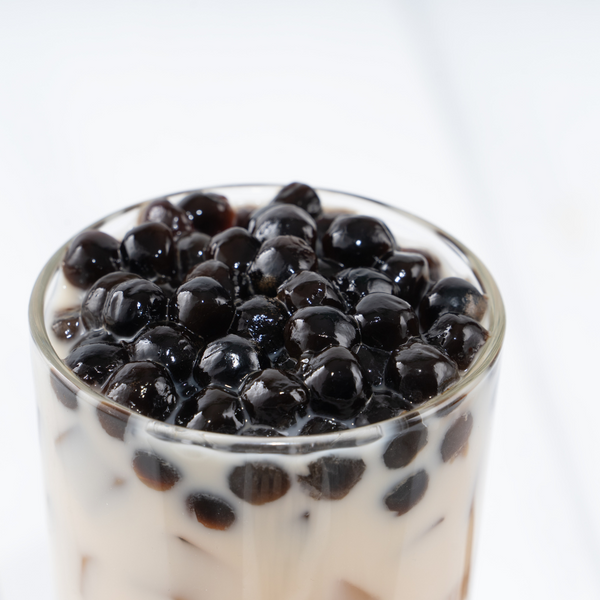
Types of flavour
The final (and arguably most important) decision is the flavour, which may be the type of tea itself or a sugar syrup or powder mixed into the tea. There are tons of these, so here's just a small selection.
- Apple
- Assam
- Avocado
- Banana
- Banoffee pie
- Brown sugar
- Chocolate
- Chocolate smoothie
- Creme brulee
- Coconut water
- Earl grey
- Genmaicha
- Grapefruit
- Honey
- Hong Kong milk tea
- Kiwi
- Milk coffee
- Milo
- Oreo
- Passion fruit
- Pomegranate
- Raspberry
- Strawberry milkshake
- Taro
- Thai milk tea
- Vanilla
How to make bubble tea at home
Preparing a delightful cup of bubble tea demands meticulousness and precision to achieve that signature taste and texture. Here's an easy-to-follow guide we put together which tells you how to create your homemade bubble tea masterpiece.
Bubble tea ingredients
- Chosen tea (e.g., black, green, oolong, or fruit tea)
- Preferred type of milk or its alternatives (e.g., full-fat milk, soy milk, lactose-free milk, yoghurt-like drinks)
- Preferred toppings (e.g., tapioca pearls, taro balls, sago, grass jelly, fresh fruit, red beans, and more)
- Desired flavourings (from sugar syrups, fruit purees to flavoured powders)
- Ice cubes (optional for those who prefer a chillier drink)
Bubble tea preparation steps
-
Tea brewing: Begin by brewing your selected tea. To intensify the flavour, allow it to brew longer than usual. After brewing, ensure it cools down to room temperature.
-
Topping preparation: If using tapioca pearls, follow the package instructions to boil them until they achieve a chewy consistency. Remember, they shouldn't become too soft, as this will spoil the experience. After boiling, drain them and set aside to cool slightly. If desired, immerse them in a sugar solution for added sweetness. Similarly, prepare other toppings like taro balls or grass jelly as per their respective instructions.
-
Blending the components: Add roughly 250 ml of cooled, brewed tea and 125 ml of milk (a 2:1 ratio keeps flavours balanced) to a shaker or jar with a secure lid. Drop in 2 tablespoons of your chosen sweetener, the cooked toppings and a handful of ice. Shake vigorously for 10–15 seconds until a frothy layer forms and all elements meld together harmoniously.
-
Presentation: Choose a glass and start by placing your prepared toppings at the bottom. Gently pour over the shaken tea mixture until your glass reaches the desired fill level. Pop in a wide straw, and voilà, your artisanal bubble tea is ready to be savoured!
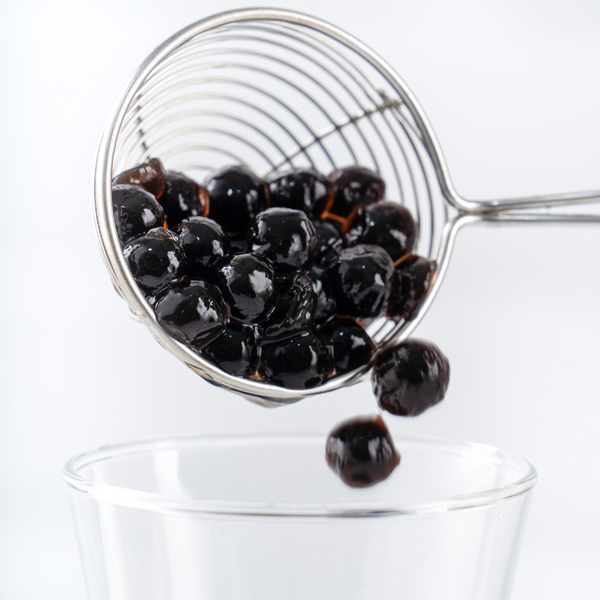
Preparation tips
- We've found that vigorously shaking the tea mixture will yield a frothy layer on top, enhancing the drink's texture.
- To mix it up a bit, we also recommend incorporating flavoured syrups, fruit purées, and other enhancements.
- Don't forget to trust your palate! Everyone's preference for sweetness and creaminess varies. Don't hesitate to adjust the components until you find your perfect bubble tea balance.
DIY Bubble Tea Kits
As the love for bubble tea soars, DIY Bubble Tea Kits have emerged, allowing enthusiasts to craft their perfect cup from the comfort of their homes. We find these kits great because they come equipped with everything you need from essential ingredients like tapioca pearls, tea leaves, and flavouring syrups, to tools like shakers and fat straws.
What is the point of the pearls in bubble tea? Do you eat them?
The pearls are chewy balls of tapioca starch that look like large pearls or ovals when cooked up into drinks. The pearls are made from a gelatinous substance called tapioca flour, which is also used to make puddings.
Some people choose not to use the pearl balls at all because they don't like them (we respect that choice), but most folks, including ourselves, love adding these chewy balls into their beverages for something extra special!
What is the tastiest bubble tea?
There are simply so many variations to choose from and so many individual preferences that it is impossible to say. The tastiest or best bubble tea comes down to a personal decision.
If you like your bubble tea less sweet, then choose a non-milk option with no additional sugar; if you do, then add it back! The perfect combination depends on personal preference, so try different combinations until you find something you like!
Bubble tea benefits. How healthy is bubble tea?
Bubble tea is a delightful beverage enjoyed by many. While antioxidants in green or black tea and vitamins in fresh fruit toppings can deliver benefits, the drink’s calorie count often comes from added sugars, flavoured syrups and full-fat milk. Luckily, you can fine-tune your cup for better balance—think half-sugar, plant-based milks or fresh fruit purées in place of syrups.
Most bubble teas contain more than 500 calories per cup (remember that you need about 2,000 calories a day). If you're watching your weight, then you may wish to choose a low-sugar option such as one that does not contain milk, additional sugar or flavours.
Health-Smart Bubble Tea Hacks
Want all the flavour without the sugar rush? Try these quick swaps:
-
Brew stronger tea and skip extra syrup for natural depth.
-
Swap full-fat milk for oat or soy milk to lower saturated fat.
-
Use honey or agave in place of refined sugar, starting with one teaspoon.
-
Add chia seeds or aloe cubes for texture and fibre instead of extra tapioca.
-
Order '30 % sugar' or 'no syrup' when visiting cafés and replicate the ratio at home.
Small changes keep the fun chewy experience while trimming calories—proof that indulgence and wellness can coexist in one cup.
Final Word
We hope you've learned something new about bubble tea. Have fun experimenting with all the different flavours and styles of our favourite bubble tea drinks! If you have any other questions, don't hesitate to ask. We love hearing from our readers!
→ Shop now: Our handpicked range of Bubble tea products
Frequently Asked Questions
How long can I store bubble tea?
Bubble tea is best consumed immediately after preparation. If you must store it, keep it in the fridge, but consume it within 12 hours. Note that tapioca pearls may harden over time.
Can I use any tea to make bubble tea?
While black, green, and oolong teas are traditional, you can experiment with other tea types, such as fruit teas. However, the flavour and strength might vary.
Is there caffeine in bubble tea?
Yes, unless you're opting for a caffeine-free base. The caffeine content largely depends on the type of tea base you choose.
Can I make a vegan version of bubble tea?
Absolutely! Use plant-based milk alternatives like almond, soy, or oat milk. Ensure the tapioca pearls and flavourings don't contain any animal derivatives.
Why do my tapioca pearls get hard?
Tapioca pearls harden when they are overcooked, undercooked, or stored for extended periods. Always follow the cooking instructions and consume them as soon as possible.

